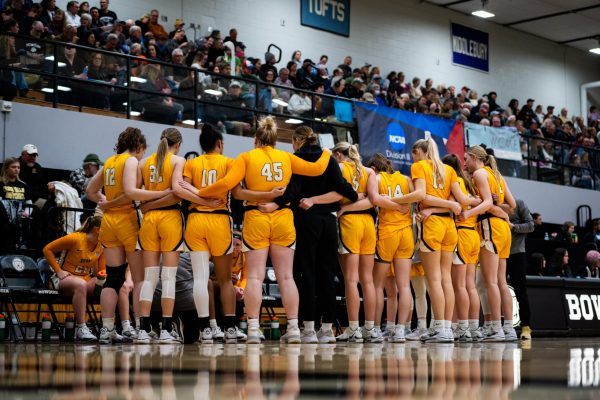Retention improves by 4% over last year
For the last two decades, the Greater Cleveland area’s population has slowly been declining. Baldwin Wallace University, however, is maintaining enrollment consistently.
Faculty in Enrollment Services are strategic in the ways that they recruit new students from the area and keeping those already attending the institution engaged. The current retention rate is 82.4%, compared to 2017 which had the lowest retention rate of 78%.
It is important to understand the demographics of where you are recruiting these new students to know who would be the best fit for the university in the future, said Trina Dobberstein, Vice President for Student Affairs at Baldwin Wallace University.
“We know some things that are factual – one thing is the high school population in this region is declining pretty dramatically,” Dobberstein said. “You have to be very sophisticated where you look [to recruit new students].”
There are some regions that have a higher population. According to Dobberstein, in the northeast, there is not a lot of growth.
In order to keep a student interested in the institution, we must provide the students with a pathway to success and help them find something that intrigues their interest, Dobberstein said.
“Students who get involved in something meaningful to them, whatever that might be, generally are happier,” said Dobberstein. “So, helping students find out what that is without overextending [their time], [and] producing a wide variety of opportunities for kids.”
While most of the efforts in the department analyze the demographics behind retaining Baldwin Wallace students, Steve Stahl, Provost, mentioned another key component in retaining students is understanding what exactly will make the correct students enroll and stay enrolled.
If a student is being recruited by BW, it means they would be an appropriate fit for the institution and are expected to stay. According to Stahl, students who are engaged and interested in the university are easier to retain than recruiting a new student, which financially, is not always feasible. Financially, it costs less to retain a student than to recruit a new student.
The goal is to recruit new freshman and retain upper-class students. According to Stahl, graduating on time is a four-year process and students should and will be prepared after four years of education from the institution.
The goal is to keep students on a four-year graduation plan, especially those of the underrepresented population, said Stahl.
“Our mission is to give access to a high-quality education,” said Stahl, “And making sure that every student who comes in the door is in the best possible position to graduate [on time].”
Although it seems easy to retain students, there are many difficulties, Stahl said. Generally, after the first four weeks of school, students begin to become more engaged or less engaged with the institution as a whole.
“We are trying to guide students by giving them what they need,” said Stahl, “and then we’re gradually trying to back away. [We] give the advice and guidance and see students succeed on their own.”
According to Stahl, the stretch goal is to retain 87% of students and to maintain a strong culture that is welcoming.
The Exponent is looking for financial contributions to support our staff and our newsroom in producing high-quality, well-reported and accurate journalism. Thank you for taking the time to consider supporting our student journalists.










































